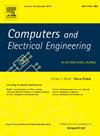An efficient industrial defect detection based on hybrid residual attention with modified generative adversarial network and convolutional neural network model
IF 4.9
3区 计算机科学
Q1 COMPUTER SCIENCE, HARDWARE & ARCHITECTURE
引用次数: 0
Abstract
Detecting and classifying industrial defects continues to pose significant issues in Industry 4.0 era, principally due to constraints in managing data scarcity, variability in fault characteristics, and the inadequacy of traditional models to adapt to different and dynamic situations. Contemporary approaches frequently encounter difficulties in producing dependable synthetic data, effectively extracting essential features, and attaining robust performance in industrial applications. This paper presents a hybrid residual attention generative adversarial network with convolutional neural networks (RAtGAN-CNN) model to address these constraints. The RAtGAN-CNN framework combines residual blocks and attention mechanisms with a generative adversarial network to produce high-quality synthetic samples that replicate the complex distributions of real defects. This approach effectively addresses data scarcity and is trained concurrently with a discriminator through adversarial learning, thereby enhancing data diversity and reducing overfitting in situations with limited labeled data. The lightweight design guarantees appropriateness for real-time industrial applications, fulfilling the demands of computationally limited situations. The model employs a lightweight convolutional neural network (CNN) that utilizes a modified residual block to boost feature extraction, while its attention mechanism concentrates on critical defect areas to improve detection accuracy. These methodologies empower the RAtGAN-CNN to operate effectively across many datasets and settings, particularly excelling in situations with sparse or highly variable input data. The framework is evaluated on a binary image classification dataset of industrial casting defects, attaining a competitive accuracy above 99% on the validation set, with a lightweight model size of 12.5 MB and an average inference time of 18.5 ms per image on a single GPU. Metrics including precision, recall, and F1-score illustrate the approach’s robustness, underpinned by thorough evaluation via confusion matrices and loss-accuracy curves.
基于改进生成对抗网络和卷积神经网络模型的混合剩余注意的工业缺陷检测
在工业4.0时代,工业缺陷的检测和分类仍然是一个重大问题,主要是由于管理数据的稀缺性、故障特征的可变性以及传统模型不足以适应不同和动态的情况。当代方法在产生可靠的合成数据、有效地提取基本特征以及在工业应用中获得健壮的性能方面经常遇到困难。本文提出了一种基于卷积神经网络的混合剩余注意生成对抗网络(RAtGAN-CNN)模型来解决这些问题。RAtGAN-CNN框架将残差块和注意力机制与生成对抗网络相结合,产生高质量的合成样本,复制真实缺陷的复杂分布。该方法有效地解决了数据稀缺性问题,并通过对抗性学习与鉴别器同时训练,从而增强了数据多样性,减少了标记数据有限情况下的过拟合。轻量化的设计保证了实时工业应用的适用性,满足了计算有限情况下的需求。该模型采用轻量级卷积神经网络(CNN),利用改进的残差块来增强特征提取,同时其注意力机制集中在关键缺陷区域,以提高检测精度。这些方法使RAtGAN-CNN能够在许多数据集和设置中有效地运行,特别是在稀疏或高度可变输入数据的情况下表现出色。该框架在工业铸造缺陷二值图像分类数据集上进行了评估,在验证集上获得了99%以上的竞争精度,轻量级模型大小为12.5 MB,单个GPU上每张图像的平均推理时间为18.5 ms。包括精度、召回率和f1分数在内的指标说明了该方法的稳健性,并通过混淆矩阵和损失准确性曲线进行了全面评估。
本文章由计算机程序翻译,如有差异,请以英文原文为准。
求助全文
约1分钟内获得全文
求助全文
来源期刊

Computers & Electrical Engineering
工程技术-工程:电子与电气
CiteScore
9.20
自引率
7.00%
发文量
661
审稿时长
47 days
期刊介绍:
The impact of computers has nowhere been more revolutionary than in electrical engineering. The design, analysis, and operation of electrical and electronic systems are now dominated by computers, a transformation that has been motivated by the natural ease of interface between computers and electrical systems, and the promise of spectacular improvements in speed and efficiency.
Published since 1973, Computers & Electrical Engineering provides rapid publication of topical research into the integration of computer technology and computational techniques with electrical and electronic systems. The journal publishes papers featuring novel implementations of computers and computational techniques in areas like signal and image processing, high-performance computing, parallel processing, and communications. Special attention will be paid to papers describing innovative architectures, algorithms, and software tools.
 求助内容:
求助内容: 应助结果提醒方式:
应助结果提醒方式:


